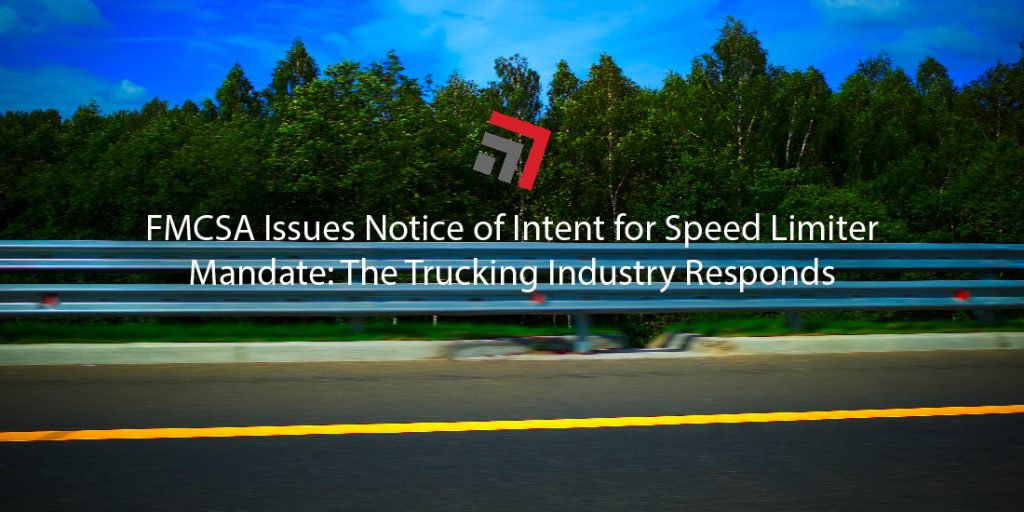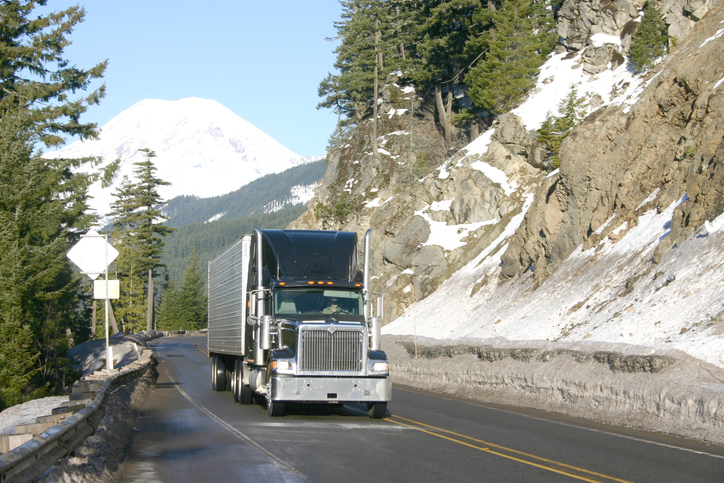
Commerce Express Weekly Road Map: June 21st, 2022
Keeping you informed on the latest news/insights in our industry.
Commerce Express Blog

On April 27, the FMCSA published and released a Notice of Intent (NOI) document announcing the agency’s plans to propose that any commercial vehicle with a gross vehicle weight of 26,001 pounds or more be equipped with an electronic engine control unit (ECU) that will be capable of governing speed to a certain limit. This exact speed limit will be determined by a rulemaking process.

Trucking Update
- Truck crashes are on the rise and recently, the President announced $463.5 million to states and U.S. territories in 2022, for Motor Carrier Safety Assistance Program (MCSAP) grants, to help prevent truck crashes, Freightwaves reported. This funding is a 52% increase from the past year. Additionally, the top three states that received the most funding were Texas, California, and Florida – they combined for over 20% of the money in the program, Freightwaves says. The money states receive from this program must be used to reduce the number and severity of crashes and hazardous material incident, that involve commercial trucks and buses.
- In May, truckers and fleets bought less used trucks, as freight growth slowed. Compared to April, used Class 8 same-dealer retail sales dropped to 10%, and were 40% lower than in May 2021, FleetOwner reports. Furthermore, data that has been released, showed since April the average retail prices and average age of used trucks have basically not changed; with average retail prices at minus 1% and average age of used trucks at plus 1%, FleetOwner says. Additionally, the average miles of used trucks were 2% lower compared to in April, data shows.
- The speed limiter law that the FMCSA is proposing may come with some challenges, as officials in Ontario, have seen their fair share of problems developed with the device, Transport Topics reports. Ontario first implemented a speed limiter law back in 2009. The Ontario Ministry said that “both speed enforcement and speed limiter enforcement is enforced by ministry officers with the use of Light Detection and Ranging and radar,” fines will occur is the driver/operator is deemed to not have a working speed limiter speed, Transport Topics reported. It’s important to note though, that the current system of enforcing the speed limiter law in Ontario is only effective when a trucker is speeding, as there is no enforcement method at roadside. Many wonder if this could be a similar challenge for the FMCSA, as they develop their own proposal, in an effort to improve on an earlier attempt at a speed limiter proposal, back in 2016.
Industry FAQ's
What are some things truckers can do to stay cool during the summer heat?
Some important tips for truckers to know how to stay cool throughout the summer heat are sun protection,, checking your tire pressures and brakes, knowing when to use your A/C, stay hydrated, driver influx awareness, and paying attention to the weather forecasts.
What is a main responsibility of the Federal Railroad Administration (FRA)?
The FRA is assigned with the oversight and regulation of passenger and freight rail operations on the national interconnected rail infrastructure within the U.S.
One of the main responsibilities is the enforcement of safety regulations; speed limits and requirements for safety features such as positive train control.

Rail Update
- Pipeline and Hazardous Materials Safety Administration and the Federal Railroad Administration will make their decision on whether they should temporarily suspend a 2020 rule allowing for the transport of LNG (liquefied natural gas) by rail via specialized tank cars, as they review the impact on safety, the environment and on Native American tribes – Freightwaves reports. There has been some pushback regarding LNG by rail, with some environmental groups wanting a ban on LNG via rail altogether, siting LNG as a “highly unstable and explosive liquid” and is “far too dangerous to move this hazardous/flammable and potentially explosive cargo by rail through communities.” They are expected to issue their decision by June 30th. Additionally, federal regulators have other undecided matters regarding LNG via rail, those decisions are due by June 30th, 2024.
- The top four Class I railroads (UP, BNSF, CSX and NS) plans on restoring service have not been as detailed as the Surface Transportation Board would like. The STB is ordering the railroads to provide more details on their plans to correct deficiencies and provide new information on how they intend to improve customer service, or risk being fined up to $8,736 per day for failing to comply, Supply Chain Dive.
- Operations are continuing at Canadian National after members of the IBEW (International Brotherhood of Electrical Workers) went on strike Saturday, Freightwaves reports. Additionally, CN has a contingency plan in place for as long as needed, that will allow the railway to maintain a normal level of safe rail operations throughout Canada.
- For the week ending on June 11th, 2022, total U.S. weekly rail traffic was at 510,295 carloads and intermodal units, which is down 3.6 percent compared to the same time last year, the Association of American Railroads reported. Additionally, total carloads for the week were at 234,942 carloads – down nearly 3 percent from the same time last year. While U.S. weekly intermodal volumes were at 275,353 containers trailers – down 4.4 percent
- Canadian railroads reported 77,814 carloads for the week (up 2.1 percent) and 73,084 intermodal units (down 0.4 percent), compared to the same time last year, the AAR reports.
- Mexican railroads saw 19,740 carloads for the week (down 15.7 percent) and 14,719 intermodal units (down 14.4 percent) compared to the same time last year, the AAR says.
Follow Us on LinkedIn!
If you are enjoying our weekly content, check out our LinkedIn to see our weekly blog posts, updates and more!


Recent Comments